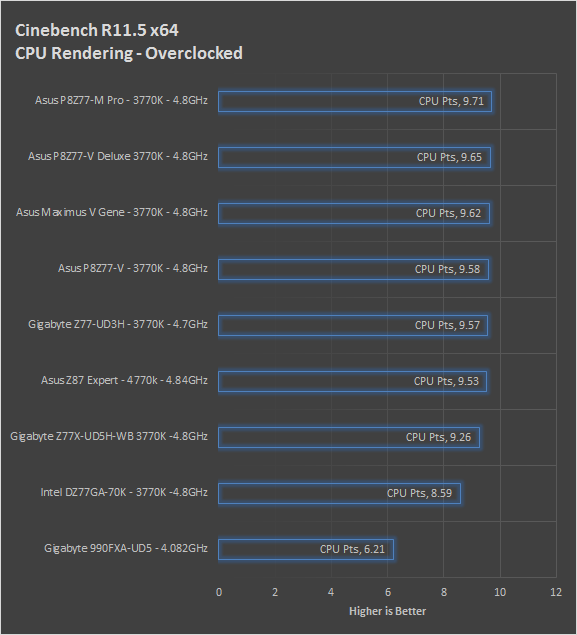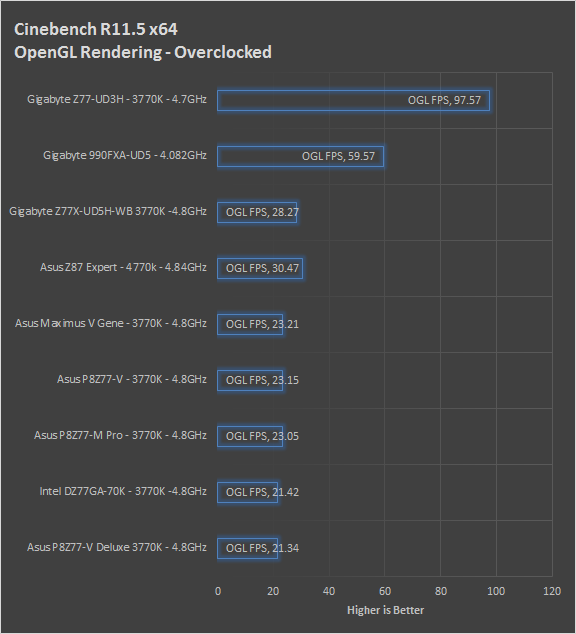Section II - Performance Tests, Synthetic
In this section of testing we cover the synthetics. These are tests that run a scripted sequence of internal APIs or that use another installed application to perform a series of scripted events. They are great in that they can provide reproducible results across various platforms. On the down side, synthetic tests can be fooled with driver tweaks and optimizations. In some cases it is necessary to rename the .exe file to something generic to discover if this is the case. In any event when this is needed (when a test shows a drastic difference in performance over the renamed exe) we will note this and show both results for comparison.
PCMark7 -
PCMark7 is the latest general performance test from FutureMark. As each generation of this benchmark has evolved and developed we have watched them add more and more realistic tests to this suite. With this generation we find more media tests, (audio and video transcoding) moving of large files, multiple web page rendering, and much more (the even added DX10 gaming). We use the Overall Performance and Common Usage suites in our testing. The Z87-Expert did not do so well in our PCMark7 testing. Despite having a newer CPU with a better memory controller and better performance from the drive subsystem our performance numbers were not all that good.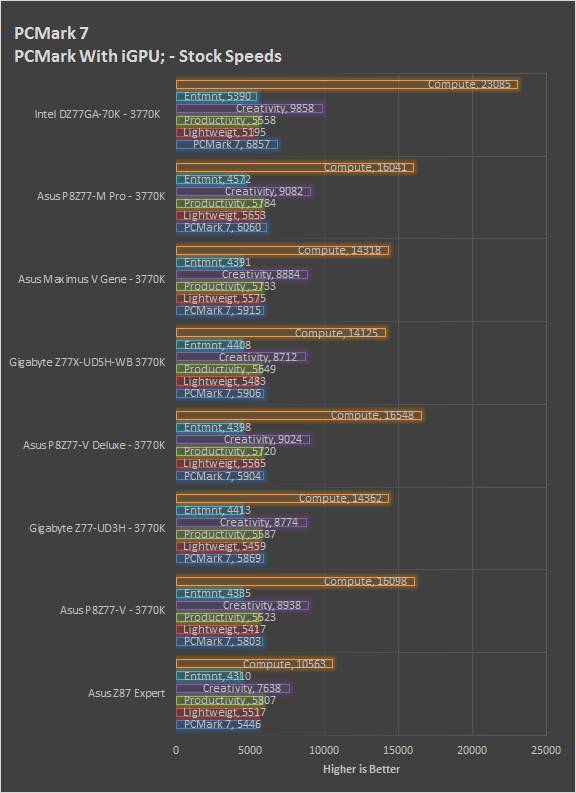
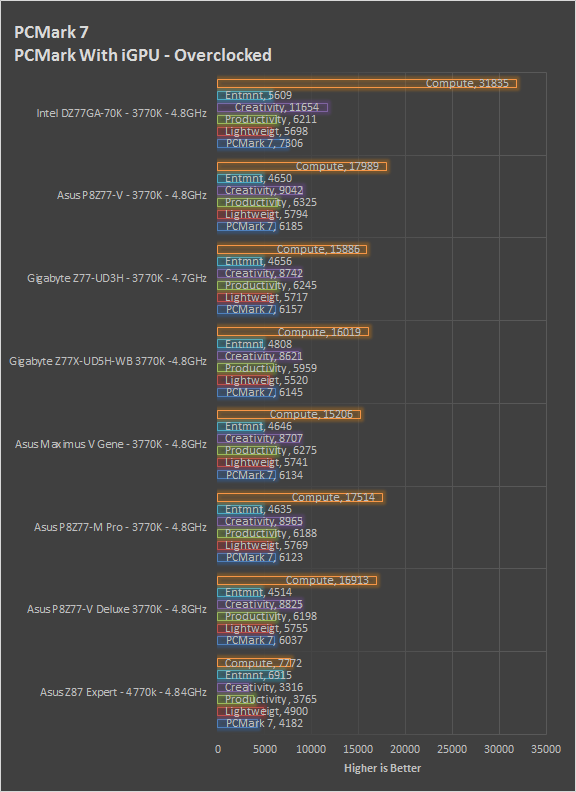
Now that we have fully validated PCMark8 we will begin including these scores in our reviews. PCMark8, although technically similar, has some differences in it that make it a great piece of software for use as a baseline. The numbers here are presented as a contrast to the scores we saw with PCMark7.
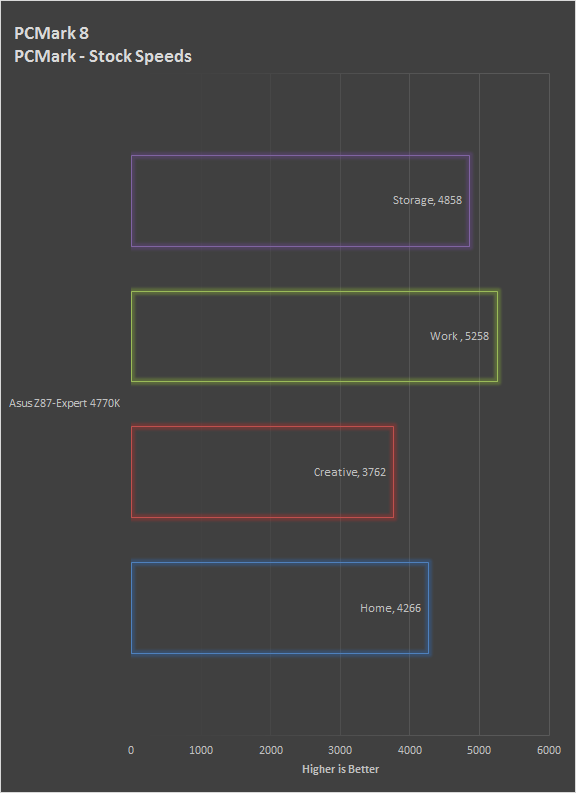
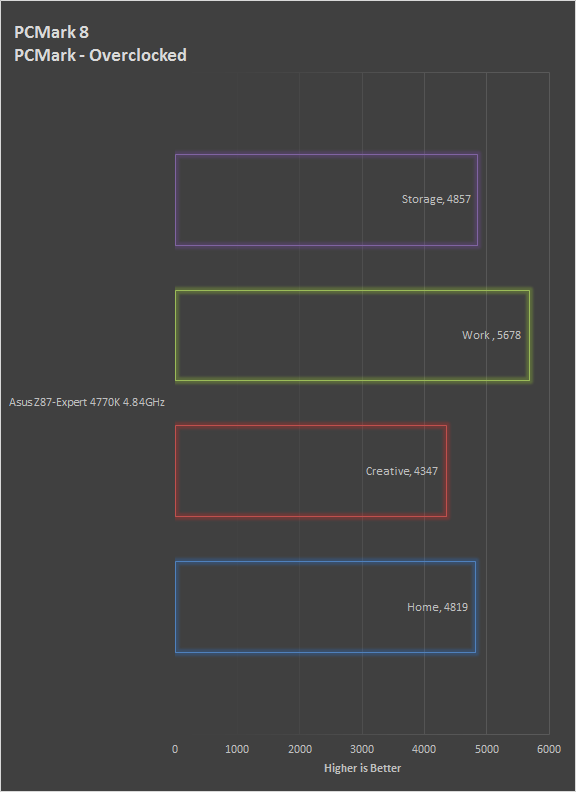
3DMark -
3DMark is the other Futuremark test that we run on our motherboards. This test simulates the typical tasks that a GPU (and system) would have to perform to provide you with a good gaming experience. It is based on the DX9, DX10 and DX11 engines but can only be installed on Windows Vista or later. The suite of tests covers DX9, DX10, and of course DX11 rendering; it also covers AI computations and physics. That’s right I said Physics the latest version of 3DMark uses a Havok physics engine. This removes the advantage that nVidia had with 3DMark Vantage. Futuremark has also broken out the tests into distinct groups for different performance levels and also to test different aspects of gaming. It is a very comprehensive test.
Once again we are just moving to using 3DMark all on its own instead of a combination of tests. We are only able to show the data from the Z87-Expert for this run, but things are looking solid considering we are only using the Intel HD 4600 GPU.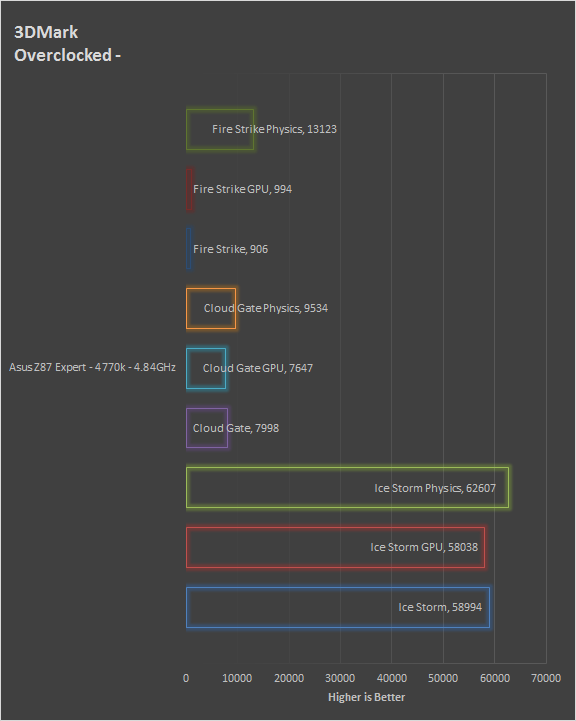
HyperPi 0.99b -
HyperPi is a front end application that allows you to easily run multiple instances of the SuperPi application. SuperPi, for those that are not familiar with it, is an application that measures the time it takes to calculate the number Pi out to as many as 32 million places. This calculation is then checked and run multiple times (up to 24 for a 32M run). This test stresses the CPU, Memory and HDD as data is handed off between the three. If there is a weak link, HyperPi will show it. For our testing we run the 32M test on as many cores (and threads) as the CPU has available. The slowest CPU time is then recorded. The blue bars indicate the slowest time while the red indicate the fastest. 
The Asus Z87-Expert with the Intel Core i7 4770K made short work of our HyperPi testing. Both at stock speeds and overclocked the pair did a very impressive job on powering through this test. In the real world, this should give us a boost in 3D Rendering, Video Encoding, and even potentially in gaming for those games with heavy AI or CPU based Physics.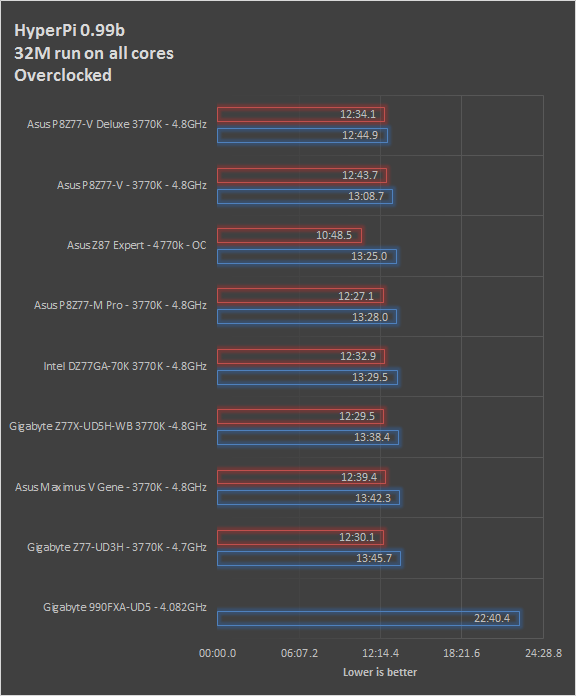
Cinebench R11.5 -
Cinebench R11.5 is the 11th release of Maxon’s rendering test. This test is based off of the Cinema 4D engine, which is one of the industry standard tools for digital animation. It is a powerful product with many different modules that can be “plugged” into it to increase its effectiveness. With Cinebench you get to see how your computer would do using this application. There are two tests; one tests the CPU’s ability to render an image across multiple cores or threads. The other tests your systems ability to handle OpenGL based rendering.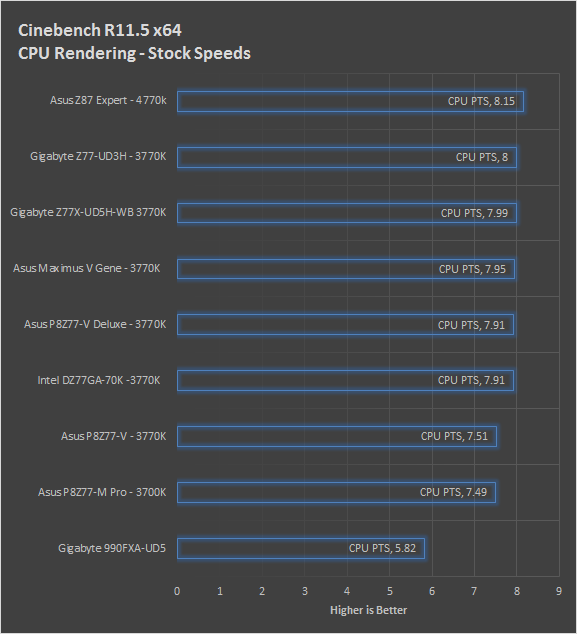
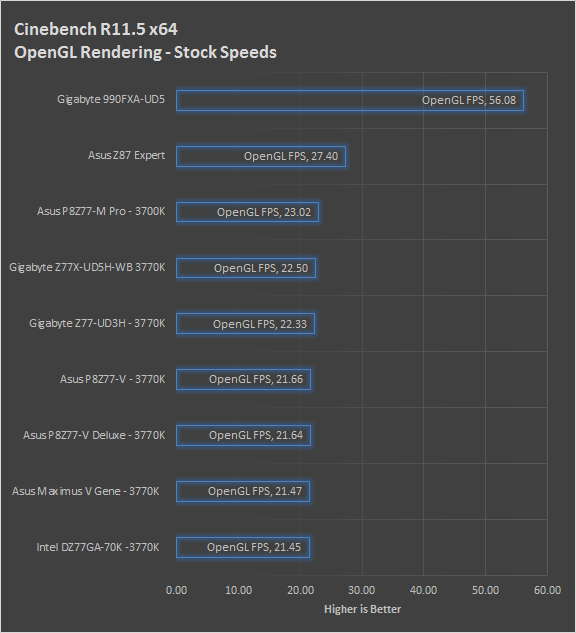
The Z87-Expert did not have any issues with Cinebench 11.5 at stock speeds. However when overclocked to 4.84GHz it fell off a lot more than we expected. Likewise the HA 4600 did not perform so well in our OpenGL testing.